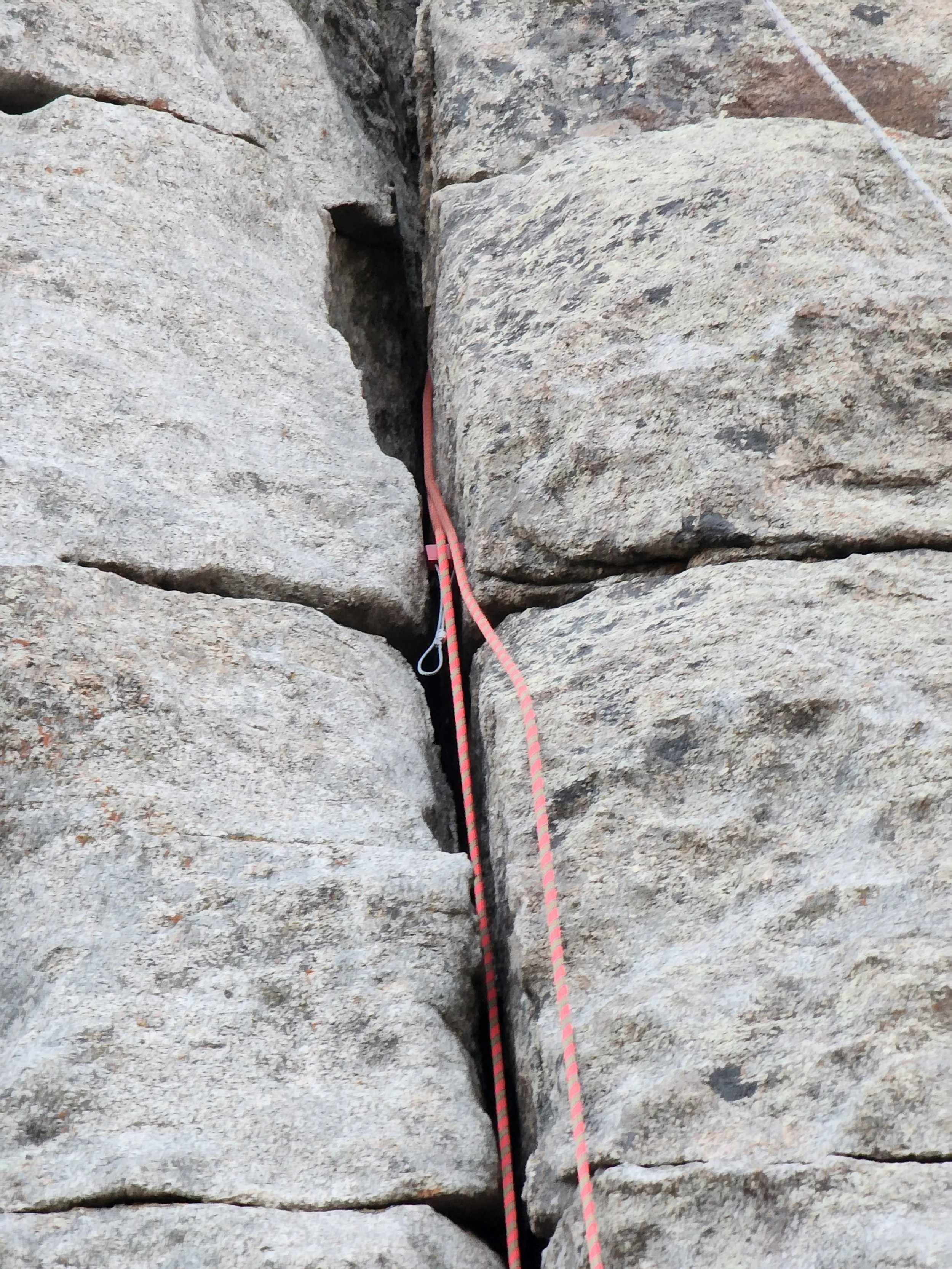Hexes: Not Completely Useless
Oh, hexes…Let me count the ways I love you
Your alpine cowbell and windchime tones let the other climbers know they woke up too late to be first on the route
With you in my hand, I can easily fight off even the boldest of marmots
You’re cheap, so I can leave you behind without shedding a single tear
You’re light, so I can bring more of you and have fewer friends
You’re weird
You have six sides, so I need a sixth point
Jokes aside, here’s the real tip
Hexes keep routes out of cracks better than cams
A hex doing its job
That’s it. Really. Simple, right?
Where a cam meets the rock, the lobe is rounded, allowing the rope to wedge tightly between the two. This can cause tremendous rope drag, dislodge your cam, or send your protection deep into the abyss never to be seen again. The danger is most prevalent when the terrain changes from vertical to low-angle and the crack is a straight up-and-down splitter. But fear not, hexes are here!
Hex saving the rope from running into the abyss
Hexes (and nuts, too) contact the rock snuggly with no such space for the rope to cause mayhem. Instead, the rope flows over them, pushed to the surface of the crack by the unmoving mass of metal. Place a hex (okay, fine, a nut) at the apex of a roof or when the angle mellows out to keep the rope running smoothly. For extra points, place your nuts (and hexes) in the wider orientation so the side exposed to the rope is rounded instead of a 90° angle.

